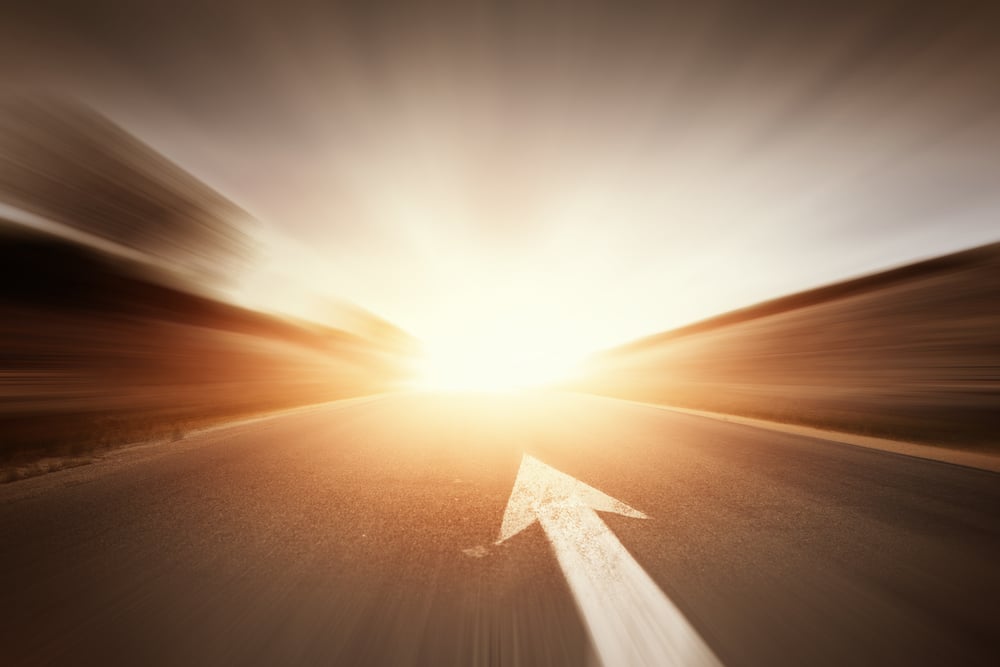
A well-defined lead generation strategy is a way to keep sustainable growth in a B2B company. So, you need to know what works for your business and audience to make it effective.
Digital transformation is here, so you need to prepare for changing customer expectations, using new technologies, and making lead generation tactics agile and data-driven to produce real results and attract new customers.
Looking for proven B2B lead generation strategies to attract quality prospects and earn their loyalty? Learn how to generate leads that convert in 2025.
Types of B2B Leads
To maximize the effectiveness of your lead gen strategy, you need to understand the different types of B2B leads. There are two primary categories: Marketing Qualified Leads (MQLs) and Sales Qualified Leads (SQLs). Each type requires different approaches to nurture and convert within the sales funnel.
Marketing Qualified Leads (MQLs)
Marketing Qualified Leads (MQLs) have shown interest in your company’s products or services through their interactions with your marketing content. This could include downloading a whitepaper, attending a webinar, or subscribing to a newsletter. MQLs are considered high-quality leads because they have demonstrated engagement with your brand.
Image source: Chilli Piper
However, MQLs may need more time to be ready to make a purchase. They often require further nurturing through targeted content and personalized follow-ups to move them down the sales funnel. By understanding the behaviors and interests of MQLs, marketing teams can create tailored strategies to keep these leads engaged and guide them toward becoming sales-ready.
Sales Qualified Leads (SQLs)
Sales Qualified Leads (SQLs) are those golden opportunities the sales team has reviewed and identified as ready for direct engagement.
These leads have shown strong purchasing intent and shared enough information to confirm they’re a good fit as potential customers. Because SQLs have already been filtered through the marketing process, they’re considered high-quality prospects and are far more likely to convert into paying customers.
In the B2B lead generation process, differentiating leads from MQLs to SQLs allows businesses to tailor their approaches, better meet each lead’s needs, and increase the chance of conversion.
By focusing on SQLs, sales teams can prioritize their efforts on leads with the highest potential for conversion, thereby improving sales efficiency and driving revenue growth.
Companies that understand and leverage the different types of B2B leads can optimize their lead generation strategies, enhance collaboration between sales and marketing teams, and ultimately achieve better business outcomes.
|
Transform Your Lead Generation Approach Unlock the potential of B2B online lead generation with these proven methods to attract and engage your ideal customers. |
B2B Lead Generation Strategies - Where to Start?
Let’s focus on a question asked by all B2Bs: How to generate leads?
To understand it better, we need to go back to basics. As lead generation is based on identifying potential customers (leads) and moving them toward a sale, this often means targeting other companies, key decision-makers, and stakeholders with the authority and interest to purchase your products or services.
A lead generation strategy that’s well structured and effective builds a pipeline of potential customers and drives customer acquisition and loyalty. Businesses can get more out of their marketing and sales by focusing on qualified leads, reducing acquisition costs, building stronger customer relationships, contributing to long-term retention, and generating more leads.
Ideal Buyer Identification
Defining your ideal customer means identifying their demographics, firmographics, and behavioral characteristics. When you know your perfect buyer, you can create targeted marketing and sales strategies that speak to them.
By understanding the buyer's journey, you can map out the path a buyer takes from awareness to purchase.
Start by looking at your existing customer base to see your best customers' common traits. Look at the industry, company size, job roles, and buying behavior. Use this to create detailed buyer personas that represent your ideal customers.
These personas will guide your marketing and sales teams in creating messages and offers that speak directly to your target market and increase the effectiveness of your lead gen.
Understanding Customer Needs
Understanding customer needs involves gathering insights into your target market's challenges and pain points and developing solutions that address those needs. Understanding customer needs allows you to create value propositions that resonate with potential customers and drive conversions.
Image source: Bluehost
Do market research, surveys and interviews to really understand your customers’ needs and preferences. Use this to tailor your products, services and marketing messages to their pain points. By showing you understand and can solve their problems you build trust and credibility with your audience and they’re more likely to engage with your brand and convert into qualified leads.
Creating Buyer Personas
Wondering how you can identify your target market? Create buyer personas.
A buyer persona is a semi-fictional representation of your ideal customer based on market research and data analysis. It includes demographic information, such as job title, industry, and company size, as well as behavioral characteristics, such as pain points, goals, and motivations.
Creating it helps you tailor your marketing efforts and sales approach to meet your target audience's specific needs and preferences.
Buyer persona example
To create effective buyer personas, start by gathering data from various sources, including customer surveys, interviews, and analytics. Identify common patterns and characteristics among your best customers, and use this information to build detailed profiles.
These will help you get to know your audience better and create more targeted and effective marketing campaigns that speak to your target market.
Sales Strategy
A successful sales strategy involves several key steps, including understanding your target market, creating a compelling value proposition, and building a strong sales team. It also involves setting clear goals, aligning them with overall business objectives, and leveraging technology and automation to support sales teams and improve efficiency.
Image source: Propeller
It starts with a deep understanding of your target market and their needs. Use this knowledge to craft a value proposition that clearly communicates the benefits of your product or service.
Next, build a strong sales team that is equipped with the skills and tools needed to effectively execute your strategy. Invest in training and development to ensure your team is well-prepared to engage with potential customers and close deals.
Setting Clear Goals
Establish specific objectives and align them with overall business objectives. Clear goals provide direction and focus for sales teams, so they can prioritize their efforts and track their performance to make data-driven adjustments to their sales strategy.
Image source: Agency Analytics
To set effective goals, start by defining what success looks like for your business. This could include metrics such as revenue targets, lead conversion rates, or customer acquisition costs.
B2B Lead Generation Best Practices
In 2025, marketers have access to more digital tools and data than ever, so you need to stay agile. Generating leads through various marketing strategies and channels, such as AI-powered personalization, intent-based SEO, and advanced marketing automation, requires continual experimentation and refinement of B2B lead generation tactics.
Remember that not all lead gen ideas will work for every company, but experimenting with new formats can reveal untapped opportunities. Some of the most effective ones come from a mix of creativity and data. Think webinars that educate while subtly showcasing your expertise or interactive tools that solve real problems.
1. Value-Driven Content
B2B buyers don’t want sales pitches; they seek solutions. The heart of a successful strategy lies in creating content that speaks directly to their challenges. Think beyond blog posts—whitepapers, case studies, and detailed guides provide the depth decision-makers crave. The key? Go deep, not wide. Offer actionable insights and data-backed conclusions that position your brand as a trusted authority.
For example, if your audience struggles with CRM adoption, create a comprehensive guide that walks them through common pitfalls and solutions. Share real-world success stories to add credibility. Remember, in B2B, trust is currency.
Learning how to generate B2B leads online is as much about being authentic as it is about strategy. When your content feels relevant, valuable leads will follow.
Focus on:
- Thought leadership content that positions you as a problem-solver.
- Optimizing for long-tail keywords that reflect specific buyer intent.
- Regularly updating older, high-performing content with fresh data and insights to maintain relevance and improve SEO rankings.
Humanize Your Brand with Micro-Storytelling
B2B doesn’t have to be boring. Micro-storytelling brings your brand to life by sharing bite-sized, authentic stories about your company, team, or clients. This approach helps establish trust and emotional connections. Think beyond case studies: share real challenges, small victories, and behind-the-scenes moments. It makes your brand relatable and memorable.
Example: Instead of a long white paper, create a LinkedIn post about how your team solved a specific customer challenge. Short, powerful stories often resonate more deeply.
|
Unlock Effective B2B Lead Tactics Get your B2B lead generation ideas to gain a competitive edge and achieve your revenue goals in 2025. |
Blogging
Blogging helps you attract high-quality leads and drive sales growth. Creating informative and engaging blog posts enables you to establish your brand as a thought leader in your industry and attract potential customers searching for solutions to their problems.
Here are some tips for using blogging as a lead-generation strategy:
- Create blog posts that are informative, engaging, and relevant to your target audience’s needs and pain points.
- Use keywords and phrases that your target audience is searching for to optimize your blog posts for search engines.
- Use calls-to-action (CTAs) to encourage readers to take the next step and engage with your brand.
- Share your blog posts on social media to increase visibility and reach a wider audience.
- Use analytics to track the performance of your blog posts and identify areas for improvement.
2. Website Personalization with AI
AI personalization has taken center stage, allowing businesses to create dynamic content and tailored website experiences for each visitor. AI tools analyze behavior, such as browsing patterns and interaction history to deliver personalized content or product recommendations.
Image source: Satista
Statista reports that 63% of marketers have experienced higher conversion rates thanks to personalization.
3. Advanced LinkedIn Campaigns
LinkedIn is the preferred social network for B2B, with nearly 80% of B2B leads coming from the platform. That’s because of its precise targeting features and targeted advertising. Its campaigns can segment audiences based on job titles, company size, industry, and other demographics, so it allows businesses to effectively reach key decision-makers.
Experiment with Sponsored InMail and interactive post formats to make campaigns more engaging. Invest in Sponsored Content and Lead Gen Forms to capture leads directly on the platform. Engage actively in industry groups and share thought leadership content that sparks conversation. LinkedIn’s analytics tools offer valuable insights—use them to refine your approach and target decision-makers effectively.
4. Interactive Tools as Lead Magnets
Lead magnets like calculators, diagnostic tools, and assessments are excellent for attracting high-quality leads. These interactive resources are useful for your audience, often providing industry-specific insights in exchange for contact information, so they improve your conversion rate.
Image source: Datadab
Prospects appreciate tools that offer quick answers or solutions to their pain points, making them more likely to provide contact information in exchange for these resources.
Picture this: a potential client uses your ROI calculator to estimate the benefits of your service. Not only do you capture their data, but you also understand their needs better, allowing for more personalized follow-up.
5. Leveraging Customer Social Proof
Your happiest customers are your best marketers. Develop a structured referral program or encourage user-generated content (UGC) that highlights their success stories. Prospects trust recommendations from peers more than any marketing material.
Displaying customer testimonials, client reviews, and case studies prominently on your website can be an incredibly effective way to generate trust and convert visitors. Social proof reassures potential leads that others have had a positive experience with your brand.
- Actionable tips: Create a dedicated testimonials page, add video testimonials to increase authenticity, and integrate case studies on key landing pages. Feature client testimonials on LinkedIn or host a virtual event where customers share their experiences. It’s authentic, relatable, and powerful.
- Why it works: Trust is a key component of B2B sales so showcasing positive client experiences makes potential clients more willing to convert.
6. Engaging on Quora and Reddit
People often seek answers on Q&A sites like Quora or industry-specific subreddits, where they can gather insights and opinions from peers. Engaging in these communities can boost your organic traffic by connecting with prospective leads organically through valuable contributions.
These platforms are buzzing with professionals seeking advice, solutions, and discussions on specific topics. By actively participating in relevant threads or answering industry-specific questions, you establish your brand as a knowledgeable resource. Share insightful responses and link to your content where appropriate—not in a salesy way, but to add value. Over time, this authentic interaction builds trust, drives traffic, and subtly positions your company as a go-to authority in your field.
Tip: Create a dedicated online space for your industry where professionals can share insights, and invite your clients to participate. It’s not just about finding leads; it’s about building a loyal ecosystem around your brand.
7. Hosting Educational Webinars
Webinars allow companies to dive deep into topics relevant to their audience, providing valuable insights while nurturing potential leads. T
Webinars aren’t just about sharing knowledge; they’re about building relationships. Partner with industry experts or influencers to attract a wider audience. Offer exclusive insights or early access to new products. The real magic happens after the webinar: follow up with attendees to continue the conversation and nurture those leads.
- Pro tip: Offer exclusive post-webinar content, such as a summary PDF, to further incentivize sign-ups and nurture participants post-event.
- Why it works: Webinars generate a high volume of leads and help companies connect with prospects on a personal level. It builds trust and establish authority.
8. Real-Time Engagement with Live Chat
Live chat software lets visitors engage with your business in real-time. AI-driven chatbots can also capture leads outside business hours, providing responses and gathering contact information.
- Example: Tidio’s AI chatbot automates initial interactions, allowing sales teams to follow up on warm leads captured from conversations.
- Why it works: Real-time engagement keeps visitors on your site, as you address queries that can lead to immediate conversion.
|
Transform Your Lead Generation Approach Unlock the potential of B2B online lead generation with these proven methods to attract and engage your ideal customers. |
9. Search Intent-Based SEO
Understanding search intent and conducting thorough keyword research allows you to create content that meets prospective leads where they are in the buyer’s journey. By aligning content with search intent—whether informational, navigational, or transactional—you improve the chance of capturing relevant leads.
- Practical tips: Focus on keywords that reflect different intent levels and optimize for featured snippets to improve visibility.
- Why it works: Targeted, intent-based SEO increases the likelihood of capturing high-quality leads who are actively looking for solutions like yours.
10. Account-Based Marketing (ABM)
Account-based marketing focuses on high-value accounts with tailored campaigns designed to address specific needs. Tools like HubSpot or Salesforce can help identify and segment these accounts, allowing you to craft messages that resonate. Imagine sending a whitepaper directly addressing a prospect’s pain points instead of a generic email blast.
- Implementation: Develop tailored messaging, case studies, and landing pages for each target account to personalize outreach.
- Why it works: Personalized messaging and engagement resonate more deeply with prospects, enhancing trust and conversion likelihood.
11. Leveraging Video Marketing
Video content, including product demos, webinars, and client testimonials, engages audiences in a more interactive format. By optimizing videos for SEO, you can increase visibility across platforms like LinkedIn and YouTube.
- Tips: Create short, informative videos for LinkedIn and consider live-streaming events or product demos.
- Why it works: Video is highly engaging and makes complex information more digestible, improving your chances of generating qualified leads.
12. Hosting Virtual Events
Hosting virtual conferences or product launch events is an impactful way to engage leads, showcase expertise, and network. Virtual events can also provide opportunities for real-time engagement and post-event follow-up.
- Tips: Encourage attendees to participate through live Q&As and offer downloadable resources post-event to maintain engagement.
- Why it works: Virtual events drive engagement and provide high-value experiences that turn attendees into qualified leads.
13. Optimizing Landing Pages
Your landing page is often the first impression a prospect gets—make it count. A/B test everything from headlines to CTAs. Keep the design clean and focused on a single call to action. And remember, less is often more.
Landing page optimization can drastically improve conversion rates.
- Best practices: Use strong CTAs, social proof, and visually clean layouts to guide visitors toward conversion.
- Why it works: Optimized landing pages remove barriers to conversion, effectively turning visits into leads.
14. Automating Marketing Efforts
Email isn’t dead—it’s smarter. Automated sequences keep your brand top-of-mind, guiding prospects through the funnel with relevant content at each stage. Map out sequences based on user behavior, offering value every step of the way. The key? Avoid generic sales pitches. Instead, focus on solving problems.
Marketing automation streamlines the lead nurturing process, which allows you to personalize follow-ups and improve engagement. With tools like HubSpot and Marketo, you can build workflows that target leads at various stages in the buyer’s journey.
- Pro tip: Create segmented workflows to ensure each lead receives relevant, personalized content based on their behavior and stage.
- Why it works: Automation enables scalable personalization, which improves lead nurturing efficiency and boosts conversion rates.
15. Using Data-Driven Insights for Scoring Sales-Qualified Leads
Lead scoring leverages data to prioritize high-potential leads within the sales pipeline, saving time and resources for sales teams. By assigning scores based on engagement levels, companies can prioritize outreach to leads more likely to convert.
- Tips: Use engagement metrics from CRM tools to continually refine your lead scoring models, improving the accuracy and relevance of your targeting.
- Why it works: Data-driven insights ensure sales teams focus on high-quality leads, optimizing the conversion funnel.
When planning your B2B sales lead generation strategies, don’t forget to involve your sales team. Their insights into customer pain points can shape content that really resonates.
Measuring Your Lead Generation Success
Track the success of your lead generation efforts to refine your strategies and understand what resonates with your audience. Key performance indicators (KPIs) like conversion rates, lead quality scores, cost per lead (CPL), and return on investment (ROI) can provide a clear picture of what’s working and what needs adjustment.
Image source: Reve Chat
Conversion rates, for example, show the percentage of prospects who take action, helping you assess the effectiveness of your calls-to-action and content. Meanwhile, lead quality scores help prioritize prospects more likely to convert, saving time and resources for your sales team.
To help with tracking, tools like Google Analytics, HubSpot, and Salesforce are your best friends. They can give you insight into everything from website traffic to detailed lead flow, so you know which steps in the customer journey are working and where to fine-tune. These tools make it easier to analyze data and see exactly where your leads are coming from and how they convert.
Future-Proofing Your Lead Generation Strategies
The future of B2B lead generation lies in authenticity, engagement, and smart use of technology.
Stay ahead by keeping an eye on emerging trends and technologies. Invest in continuous learning and encourage your team to do the same. AI, automation, and intent data are just the beginning—be ready to adapt.
For instance, artificial intelligence tools and personalization techniques are becoming more accessible. They can be powerful ways to engage prospects in real time, showing them the content and solutions they care about most.
Continuous learning is key here. Make it a habit to read industry reports, attend webinars, or take courses on the latest trends. Adapting your strategies ensures your approach remains relevant, effective, and ready to respond to market changes. This way, you won’t just keep pace with competitors—you’ll stay a step ahead.
The flexibility of B2B lead generation methods today allows startups and established enterprises to find approaches that fit their budgets and goals.
Metrics, Trends, and Adaptability
B2B lead generation techniques have come a long way, with strategies like account-based marketing and personalized email campaigns being game-changers.
Each piece plays a role in creating a stronger, more responsive lead generation system, from tracking key metrics to future-proofing your strategy. Successful lead gen is constantly evolving, so stay adaptable, keep learning, and make the most of the tools and trends that align with your goals.
Business-to-business lead generation doesn’t have to mean throwing darts in the dark. You can create a system that consistently brings in leads by tracking what’s working and continuously optimizing.
|
Unlock Effective B2B Lead Tactics Get your B2B lead generation ideas to gain a competitive edge and achieve your revenue goals in 2025. |






